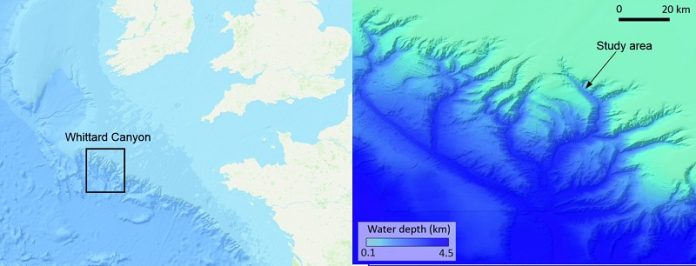
Scientists have discovered that powerful underwater avalanches are sweeping huge amounts of microplastics into the deep sea, creating hidden pollution hotspots on the ocean floor.
These underwater flows, called turbidity currents, can move at speeds of up to eight meters per second and travel from the continental shelf down to depths of over 3,200 meters.
Published in Environmental Science and Technology, the new research provides the first real-world evidence of how these fast-moving currents transport plastic pollution into deep-sea environments.
While more than 10 million metric tons of plastic waste enter the ocean every year, less than 1% of it floats on the surface. The remaining 99%—mainly tiny fibers from clothing and textiles—sinks into the depths, and now scientists know how much of it gets there.
A team of researchers from the University of Manchester, the National Oceanography Center, the University of Leeds, and the Royal Netherlands Institute for Sea Research studied the Whittard Canyon in the Celtic Sea, located over 300 kilometers offshore.
Using seabed sensors and direct sampling, the scientists were able to observe a turbidity current in action for the first time.
They saw a large plume of sediment racing through the canyon at more than 2.5 meters per second, over 1.5 kilometers deep.
Inside this plume, they found not only sand and mud, but large amounts of microplastic fragments and fibers. These fibers, which mostly come from washing clothes, are too small to be filtered by standard wastewater treatment plants and easily find their way into rivers and oceans.
Dr. Peng Chen, lead author from the University of Manchester, explained that these plastics are not only harmful by themselves, but also carry other dangerous pollutants like heavy metals and “forever chemicals,” which can make their way up the food chain and affect sea life.
Dr. Ian Kane, who led the project, noted that these currents also deliver vital nutrients and oxygen to deep-sea creatures. Now, sadly, they’re also delivering plastic waste. That means places rich in marine biodiversity are also becoming plastic hotspots, which could seriously threaten deep-sea ecosystems.
The research team hopes this discovery will help guide better strategies to prevent plastic from entering the ocean in the first place. Their next goal is to understand how these microplastics affect marine life, including deep-sea animals and sea turtles. Their message is clear: reducing plastic pollution is urgent—not just on the surface, but deep beneath the waves too.



